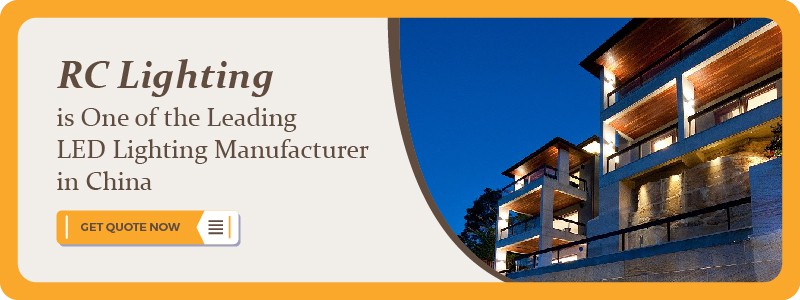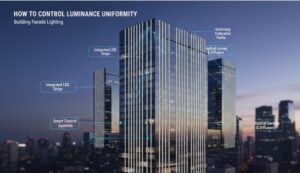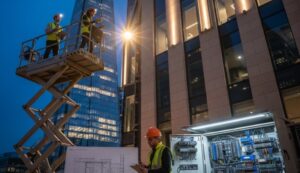We’ll explain all that in this article. We have answers to all your questions about high bay vs. low bay lighting. Also, we’ll help you make an educated decision on which one is right for you. Are you ready? Let’s get started.
What Are High-Bay LED Lights
High bay lights are LED light fixtures that require mounting positions above 20 ft. in height and mostly above 40 ft. in height.
The term “high bay” is usually used interchangeably with terms like industrial-grade or commercial-grade LED lights.
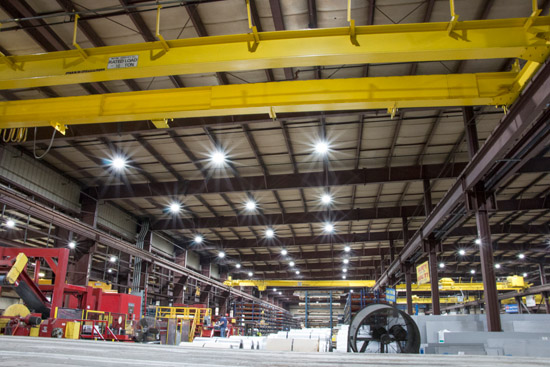
Types of High Bay LED Lights
The high bay LED lights come in different types. Some have an enclosed bulb, while others use reflectors or refractor lenses. As a result, this directs the light upwards for more focused coverage on long distances.
Another feature you may find helpful is the adjustable arms. It allows these lights to be lowered closer when desired so technicians can easily access work areas.
Application Areas for High Bay Lights
High bay lights are used in many applications. Some of them include the following:
- Warehouses
- Sports arena
- Parking lots
- Gymnasiums
- Airport hangers
High bay lights are also used extensively in industry for large open areas where the need is to cover a wide area with concentrated light.
How to Install High Bay Lights
Here are the steps on how to install the high bay LED lights:
- Plan the lighting layout
Planning is essential before you start to install high bay lights. It should provide enough light for convenient usage of the area you plan to light up.
Doing this can save you a lot of time and effort. So, if you want your fixtures to be placed high, plan first.
- Mark out the point of installation
Place a mark where you will install each fixture. It helps determine how many fixtures will be needed depending on what size space you’ll illuminate with your LED lights.
- Cut holes according to the marking done.
Make sure all markings are well-defined before proceeding further, or else irregularities may arise when cutting holes within surfaces.
- Feeding wires into new sockets
Make sure that all connections of new cables are wired securely and adequately.
- Mounting bracket
Now your fixtures can be mounted on the ceiling or wall. It all depends on what was indicated in your drawings earlier.
Finally, connect the light fixtures according to the instructions for easy installation.
What are Low Bay LED Lights?
Low bay LED lights refer to LED light fixtures mainly mounted on the ceiling under 20 ft. in height.
Typically for construction sites or industrial applications, these lights are placed on the walls to provide a good lighting source.
The low bay LED lights are known to emit a light spread out and directed downwards.
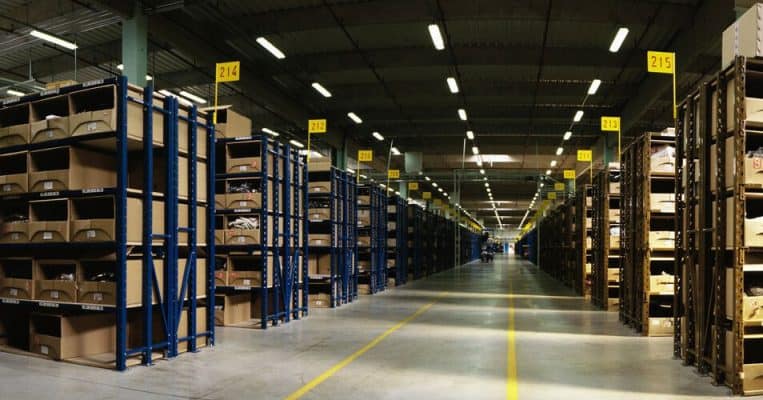
Which Types of Low-bay LED lights are There?
There are mainly two types of low-bay LED lights available in the market today. And they include:
- Full Cutoff Low Bay LED Lights-100% of the emitted light is directed downwards. Hence, these led light fixtures do not allow light to escape from the target area.
- Semi-Cutoff Low Bay LED Lights– They are designed to allow light to escape downwards along with a small amount of emitted light. It may be around 10%, but this low percentage allows the lights to produce more lumens than other fixtures.
Application Areas for Low Bay LED Lights
Some of the application areas for low bay LED lights to include:
- Gymnasiums
- Hallways and doorways, lobbies, and reception areas
- Warehouses and industrial facilities
- Parking lots, outdoor venues, and recreational facilities
- Sports courts and fields – baseball, football, soccer, etc.
- Amusement parks
How to Install Low Bay LED Lights
If you plan to install the low bay LED lights, here is how to go about it.
- First, make sure your work area is well-lit with the LED light.
- Pry off the cover on the fixture’s wire connection box with a flat-head screwdriver
- Connect wires to new fixture according to the color of insulation tape and markings
- Secure wires in place by tightening screws or nuts on each side of the junction box with pliers
- Mount low bay LED lights onto the ceiling surface using screws according to mounting height requirements.
- Next, install the safety cable following the manufacturer’s directions into the junction box.
You can use the Low Bay LED lighting for most applications where there is a need to illuminate an area with better illumination than conventional light fixtures or HID lamps.
Difference Between High Bay and Low Bay Lights
Some of the main differences between these two types of lights include the following:
- Height of installation– high bay light installation is higher than the low bay light installation. They light up spaces about 20-40 ft. from the floor, whereas low bay lights light up spaces roughly 10-20 ft. from the floor.
- The number of bulbs– high bay lights use 4-6 pieces of bulbs, whereas low bays use one or two.
- Lighting capacity– No dimming ability for high bay lights; low bay lights can be dimmed.
- Type of light produced– High bay lights make a broad area of light than low bay lights, which spread only in a particular vertical direction.
- Area covered by each type– Usually, these two types of lighting systems cover an area from 38 to 100 square feet, but there’s no fixed rule about it, and it depends upon your requirements and preferences.
In addition, high bays may be used to cover larger areas, up to 200 square feet or more, when they have reflectors to spread their light in the desired way. On the other hand, high bay lighting may not be the best choice when you have a small area, say 10 to 15 square feet. In such cases, low bay lighting is ideal.
- The direction of beam spread– high bay lights have wide beams. They use beam angles of about 120, 90, and 60 degrees. On the other hand, low bay lights have long beams of about 120 degrees.
- Drivers– High Bay lights are fitted with ballasts that power them, while low bays are directly wired to the electricity supply.
- A spectrum of Lumen output– High bays produce area lighting effects, similar to fluorescent bulbs, whereas low bays produce directional lighting effects, similar to incandescent bulbs.
- Lumens per watt depends on the size and type of lamp used in both cases, but high bays usually provide more lumens per watt than low bays.

Why LED Bay Lighting is a Good Option
Compared to traditional sources of lighting, LED bay lighting has many advantages. Some of them are as follows:
- Utility cost savings– Did you know that LED lights can save you up to 80% of electricity consumption compared to your existing lighting system? LED lights are more cost-effective than traditional light sources.
- Long-life– The average LED light can last more than 30,000 hours and more than five years of continuous use. This low maintenance cost makes LED lights more popular among commercial establishments.
- Low heat emission – compared to the HID lighting system, the LED lights produce much less heat, making it a safe option for any industrial or warehouse application.
- Better control– With the new generation of technology, you can now enjoy full control over all your lighting needs.
- Easy customization– You can now change the colors and moods of the LED lights with ease by just adjusting the controller setting.
- Safe for the environment– There are no harmful fumes, so it’s much safer than other options. For example, fluorescent lamps contain mercury which is hazardous to health. Also, LED bulbs are made of recycled material, unlike conventional metal halide or HPS lamps with harmful metals like mercury, lead & arsenic.
How to Choose Between High Bay LED lights and Low Bay LED Lights?
When choosing between high or low-bay LED lighting, are you wondering what to consider? The main things you need to consider are the application area and the desired illumination for the space. Another vital thing to consider is functionality.
If you want uniform light distribution, then choose high bay lights. On the contrary, low bays provide a “spot” light effect that increases the visual appearance and reduces glare and uplight on artwork.
Conclusion
Now that you have gone through this reading, you can distinguish between high bay and low bay lighting. Do you already have an idea of what type of lighting fixtures will suit your space the best? Well, think no more! Feel free to contact us at RC Lighting. Our capable team members are always ready to answer all your inquiries so that we can give you the most accurate quotations out there!
